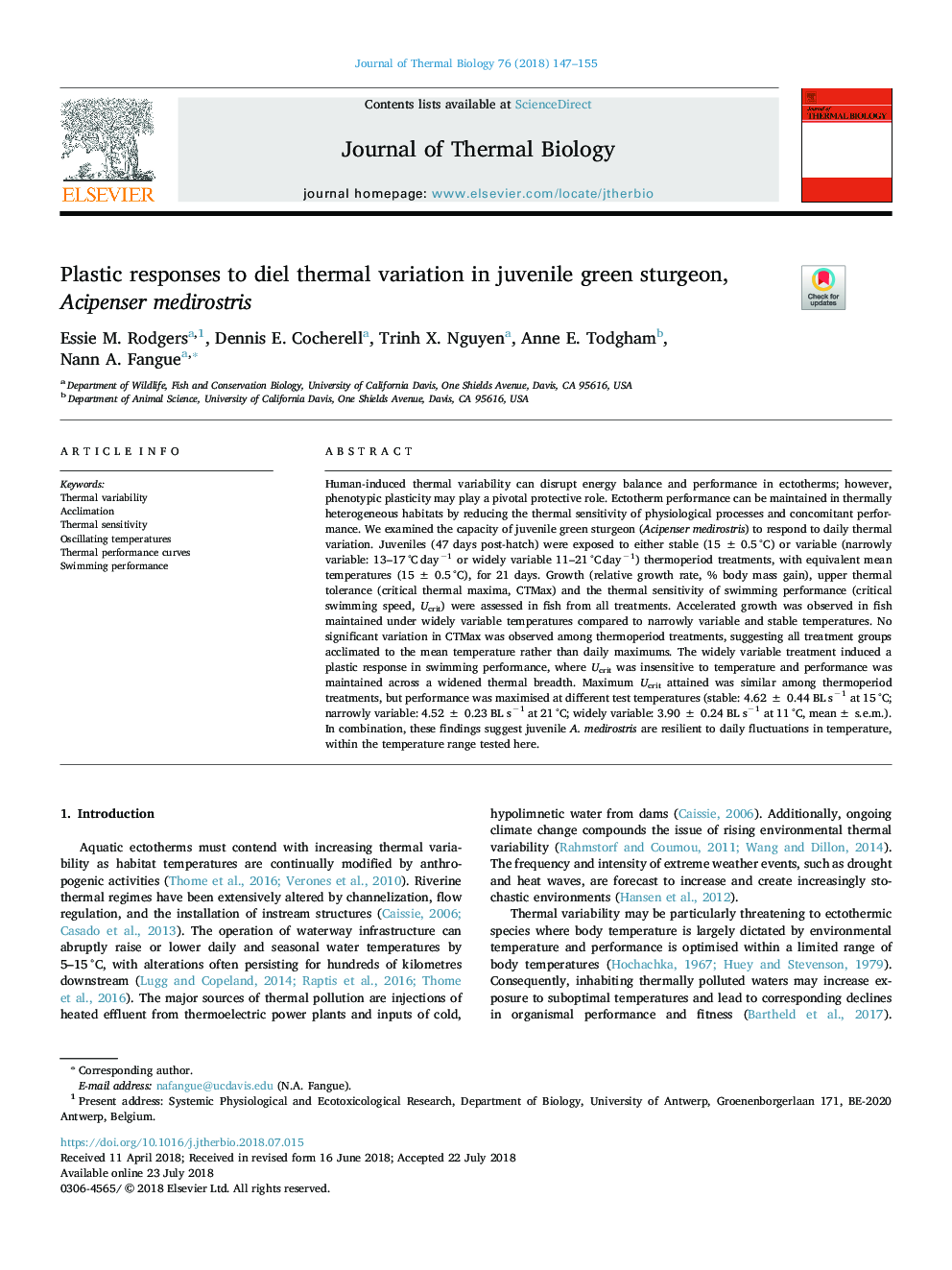| کد مقاله | کد نشریه | سال انتشار | مقاله انگلیسی | نسخه تمام متن |
|---|---|---|---|---|
| 8649949 | 1571071 | 2018 | 9 صفحه PDF | دانلود رایگان |
عنوان انگلیسی مقاله ISI
Plastic responses to diel thermal variation in juvenile green sturgeon, Acipenser medirostris
دانلود مقاله + سفارش ترجمه
دانلود مقاله ISI انگلیسی
رایگان برای ایرانیان
کلمات کلیدی
موضوعات مرتبط
علوم زیستی و بیوفناوری
علوم کشاورزی و بیولوژیک
علوم کشاورزی و بیولوژیک (عمومی)
پیش نمایش صفحه اول مقاله

چکیده انگلیسی
Human-induced thermal variability can disrupt energy balance and performance in ectotherms; however, phenotypic plasticity may play a pivotal protective role. Ectotherm performance can be maintained in thermally heterogeneous habitats by reducing the thermal sensitivity of physiological processes and concomitant performance. We examined the capacity of juvenile green sturgeon (Acipenser medirostris) to respond to daily thermal variation. Juveniles (47 days post-hatch) were exposed to either stable (15â¯Â±â¯0.5â¯Â°C) or variable (narrowly variable: 13-17â¯Â°Câ¯dayâ1 or widely variable 11-21â¯Â°Câ¯dayâ1) thermoperiod treatments, with equivalent mean temperatures (15â¯Â±â¯0.5â¯Â°C), for 21 days. Growth (relative growth rate, % body mass gain), upper thermal tolerance (critical thermal maxima, CTMax) and the thermal sensitivity of swimming performance (critical swimming speed, Ucrit) were assessed in fish from all treatments. Accelerated growth was observed in fish maintained under widely variable temperatures compared to narrowly variable and stable temperatures. No significant variation in CTMax was observed among thermoperiod treatments, suggesting all treatment groups acclimated to the mean temperature rather than daily maximums. The widely variable treatment induced a plastic response in swimming performance, where Ucrit was insensitive to temperature and performance was maintained across a widened thermal breadth. Maximum Ucrit attained was similar among thermoperiod treatments, but performance was maximised at different test temperatures (stable: 4.62â¯Â±â¯0.44 BL sâ1 at 15â¯Â°C; narrowly variable: 4.52â¯Â±â¯0.23 BL sâ1 at 21â¯Â°C; widely variable: 3.90â¯Â±â¯0.24 BL sâ1 at 11â¯Â°C, mean ±â¯s.e.m.). In combination, these findings suggest juvenile A. medirostris are resilient to daily fluctuations in temperature, within the temperature range tested here.
ناشر
Database: Elsevier - ScienceDirect (ساینس دایرکت)
Journal: Journal of Thermal Biology - Volume 76, August 2018, Pages 147-155
Journal: Journal of Thermal Biology - Volume 76, August 2018, Pages 147-155
نویسندگان
Essie M. Rodgers, Dennis E. Cocherell, Trinh X. Nguyen, Anne E. Todgham, Nann A. Fangue,